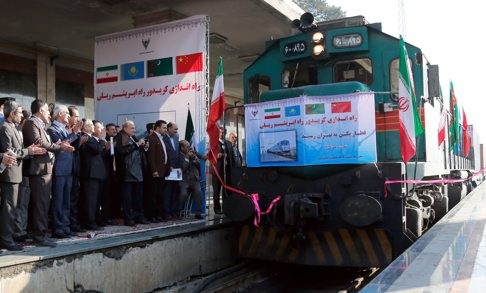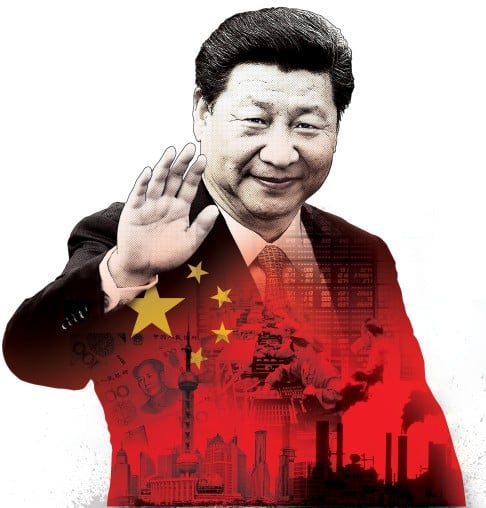
Stand aside Likonomics ... here’s Xiconomics: How President Xi Jinping is taking the reins of China’s economy
The president appears to have eclipsed the premier by seizing China’s economic reins. But what exactly does his grand vision entail?
The advent of Xiconomics, which has taken the place of Likonomics, suggests it is President Xi Jinping (習近平), rather than Premier Li Keqiang – who has a doctorate in economics from Peking University – who has seized the reins of China’s economic reform.
The term Xiconomics has been a media catchphrase on the mainland since the People’s Daily, the ruling Communist Party’s mouthpiece, launched a series of articles last month to propagate “Xi Jinping’s economic thought”.
The term Likonomics – coined by Barclays Capital three years ago to describe Li’s economic doctrine – was once known throughout global investment markets. It was taken up enthusiastically by the media – just as, in the 1980s, “Thatcherism” in Britain under Margaret Thatcher and Reaganomics in the United States under Ronald Reagan, were widely adopted, or more recently, Abenomics in Japan under Prime Minister Shinzo Abe.
READ MORE: Xi Jinping’s ambitious power play
The idea of Likonomics faded after a string of moves by Xi to take personal charge of the country’s economic affairs; Likonomics is rarely mentioned now.
Some economists even reject the idea of naming an economic theory after a politician.
“I don’t think it’s useful to talk about Xiconomics, Likonomics or, for that matter, Abenomics or Reaganomics,” said Linda Lim, a professor at the University of Michigan’s Ross School of Business in the US. “These are just catchy slogans aimed at simplifying complex concepts to the general public.”
Lei Mao, a finance professor at Warwick Business School, at Britain’s University of Warwick, said: “Government leaders cannot give any new economic theories, so if there are some concepts like that they must be produced by propaganda machines.”
Alicia Garcia Herrero, Chief Economist at Natixis, said Xiconomics suggested “Xi is starting to doubt Li’s ability to run the economy and wants to put himself at the forefront of the process”.
Not long after he took office in the ruling party and state presidency – in November 2012 and March 2013, respectively – Xi began to extend his influence outside his expected jurisdiction to cover economic matters and other daily state affairs by personally taking charge of some central leading groups.
Watch: Is China’s economy really that bad?
Xi is head of the two powerful policy bodies, the Central Leading Group for Comprehensive Deepening Reform and the Central Leading Group of Finance and Economics Affairs, both traditionally headed by the premier, rather than the state president and party chief, on most occasions. He has effectively dictated policy in economic affairs and reform through these two powerful task forces.
READ MORE: How the next five-year plan will change China: blueprint for nation’s development explained
Some believe Xi’s priority is to eclipse Li’s portfolio in economic affairs and reform. For example, Xi has personally taken charge of drafting the 13th Five-Year Plan, the main duty for the head of the government since the first of the five-year plans was made in 1953.
More recently, Xi’s top aide, Liu He, has had telephone conversations with US Treasury Secretary Jacob Lew over China’s exchange-rate policies, which many observers see as suggesting Xi may now be taking a more hands-on role in economic affairs.
Over the past three years it has been Vice-Premier Wang Yang (汪洋) maintaining communication with Lew, and the two had a telephone conversation earlier this month on the G20 summit later held in China.
Many economists have questioned what Xiconomics entails, and indeed, if there is such thing, as Xi has often shown contradictory views on economics.
In an article on Xi’s economic thinking, Hu Angang, an economist at Beijing’s Tsinghua University, lauded the president’s great achievements and contributions to the development of modern Marxist political economics.
A People’s Daily article titled “Supply-side structural reform is the new growth driver under the new normal”, offers the party’s authoritative interpretation of Xiconomics as advocating the “new normal theory” and “supply-side reform”.
This suggests China’s slowdown is a structural inevitability, and that supply-side reform could be a distinctive feature of China’s economic and social policies in 2016 and beyond.
Supply-side economics seeks to increase output and boost jobs by changing the conditions under which goods and services are supplied.
It favours cutting government involvement in the economy and allowing an unfettered free market to operate.
The centrepiece of supply-side reform, of bringing private competition into areas dominated by state-owned enterprises (SOEs), was seen in the 1980s in Britain under Thatcher and in the US under Reagan.
But under Xiconomics, the government has been allowing the birth of bloated state-owned enterprises through mergers and acquisitions, instead of privatisation to pursue higher efficiency.
Economists said Xi seemed to be strengthening state capitalism to tap overseas markets and make up for slowing domestic growth.

Xi wanted SOEs to pioneer his “One Belt, One Road” initiative, in which China hopes to bind Asia and Europe within Beijing’s embrace through the creation of an economic land belt that would include nations on the original Silk Road through Central Asia, West Asia, the Middle East and Europe, and a new maritime route linking China’s port facilities with the African coast, the Suez Canal and the Mediterranean.
READ MORE: Why sustained, healthy development will be the new normal for China’s economy
Xi has often insisted that Marxist orthodoxy on political economics should be the lodestar of China’s economic development.
Xi has held back the highly anticipated reform and privatisation of SOEs. Presiding over a Politburo session to study Karl Marx’s political economy theory on November 23, Xi pledged to “consolidate and develop the public sector”, and said “the mainstay status of public ownership and the leading role of the state-owned economy must not waver”.
Yet some liberal economists have welcomed Xi’s recent call for supply-side reform as it has rekindled hopes of restructuring.
Market reform is not an end in itself, but a means to strengthen China’s existing system, with a strong role for the government and public ownership in the economy and adherence to the party leadership
Supply-side reform has been a media catchphrase since Xi touted the idea in November.
Louis Kuijs, at Oxford Economics in Hong Kong, said it was not easy to describe Xiconomics because Xi had not elaborated on it publicly. “He seems to focus more on politics,” Kuijs said.
Herrero said the way Xiconomics had been described was contradictory and it had probably been considered in a rush to gain credibility in the markets.
Kuijs said one aspect suggested it wanted to be clearer than in the past about a specific, utilitarian approach to market-oriented reform.
“[It suggests] that market reform is not an end in itself, but a means to strengthen China’s existing system, with a strong role for the government and public ownership in the economy and adherence to the party leadership,” Kuijs said.
Some economists say market-oriented policy has been rolled back under Xi in the past two years, and criticise Xi’s refusal to restructure SOE ownership.
“I don’t know how [Xi’s] strengthening of the state-owned enterprises would help,” Mao said. “If the government is trying to regulate the economy and looking for productivity progress, scaling down the SOEs would be a must, but I cannot see how it is going to be executed.”
Herrero said Xi’s backing for rationalising loss-making SOEs was welcome, but there was no need to launch a new system of Xiconomics to do this.
READ MORE: Deflationary pressures to continue ‘haunting China’s economy’ this year
“The issue has been identified as a problem for a long time, but there does not seem to be any urgency or willingness to tackle it,” Herrero said.
Economists said Xi’s call for supply-side reform might indicate suspicions about the effect of the Keynesian demand-management method as it seemed to have failed to stabilise growth.
The idea was based on John Maynard Keynes’ belief that, in a recession, the economy can be made to grow and unemployment reduced by increasing government spending and reducing interest rates.
Economists believe Xi is confused about the overall direction of reform because he seems to have put politics before economics and regards the tightening of political control on the economy and the party’s grip on power as his top priorities.
Lim said Xiconomics was simply a variant on the structural reforms needed for long-term economic improvements.
It showed the government recognised demand-side macroeconomic management had reached its limits, she said. It was now important to emphasise microeconomic reforms originally announced by Li, such as reducing SOEs, increasing the number of small to medium-sized enterprises and becoming more market- and private-sector oriented.
Kamel Mellahi, a professor at Warwick Business School, said driving the economy primarily through supply-side reforms, rather than short-term economic stimulus measures and credit-driven policies made sense.
He said supply-side reforms could address some of the problems facing the Chinese economy, not least the overcapacity in manufacturing and inefficiencies in some of the bloated SOEs, and bolster innovation and entrepreneurship.
Mao said the government might give up Keynesian-style stimulus – but he could not see what would replace it. “Relying on SOEs for a productivity upgrade is not going to work,” Mao said. “Would Xi really scale down the SOEs and the size of the government as a whole?”
Kuijs said Xiconomics emphasised resolving supply-side issues over stimulating demand. “However, in reality we have seen significant macro easing under [Xi’s] reign,” Kuijs said. “There is potentially important tension between the objective of market-oriented reform and the aim of a strong role for the government and public ownership in the economy.”


